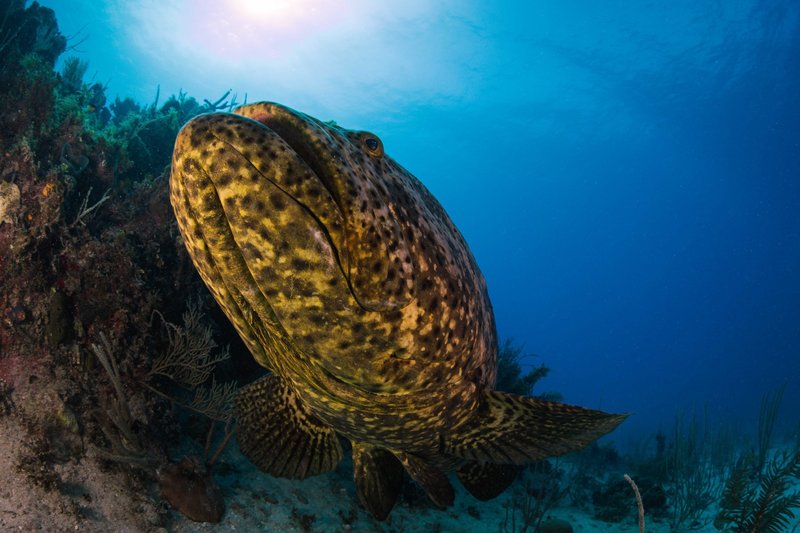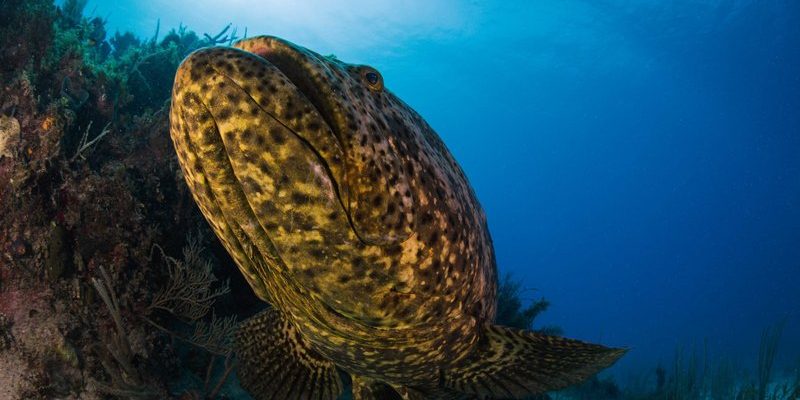
Groupers are part of the Epinephelidae family, which includes various species like the black grouper and the red grouper. They’re not just big fish; they’re clever navigators and communicators. Let’s dive deep into how these incredible creatures find their way in the ocean and how they talk to one another.
How Groupers Navigate Their Underwater World
Navigating the ocean is no easy task, especially when you’re a grouper. These fish use a combination of strong instincts, keen eyesight, and environmental cues to get around. You might be wondering, how do they manage all this in such a vast, three-dimensional space?
First off, groupers are masters at using their vision. They have excellent eyesight that enables them to spot food, other fish, and their surroundings from a distance. This is crucial when they’re hunting or looking for a place to hide. Just like we rely on our eyes in a crowded city, groupers depend heavily on visual cues to make decisions. They can even distinguish between colors, which helps them identify different species and locate mates.
Additionally, groupers have a natural sense of their environment. They often remember the layout of their surroundings, like which coral formations offer the best hiding spots or the best hunting grounds. This memory helps them navigate back to these spots consistently—much like how you might remember the best coffee shop in your neighborhood.
Using Geolocation Cues
The ocean is full of subtle hints, and groupers are experts at picking up on these. They rely on geolocation cues like the presence of certain types of coral or the layout of rocks and underwater structures. These cues create a mental map in their minds, guiding them in familiar areas and during migration.
When a grouper finds a good spot to hang out, like a cozy coral alcove, it’ll return to it regularly. This behavior aids not just in finding safety from predators but also in building a home base for hunting. Think of it like returning to your favorite park bench in the city; it’s just a place that feels right and familiar.
How Groupers Communicate with Each Other
Communication is essential for groupers, whether it’s about finding food, mating, or just staying safe from predators. But here’s the thing: they can’t pull out their phones and text each other! So, how do these fish get their messages across?
One key method groupers use is body language. They can change their posture, color, and movement to convey different messages. For example, a grouper might puff up its body or make itself look larger to assert dominance or deter competitors. This is akin to how we might stand tall to appear more confident when meeting someone new.
Vocalizations Underwater
Groupers also produce sounds to communicate, though it might not be what you expect. They make deep grunting noises by vibrating their swim bladders. This vocalization can announce their presence to other groupers, especially during mating seasons. Imagine it like setting a playlist for a party—these fish use their sounds to attract attention and invite others into their space.
Interestingly, sound plays a significant role in grouper mating rituals. Males often grunt to attract females, adding a musical element to the underwater world. This unique form of communication showcases how vibrant and rich the life of a grouper can be.
Understanding Grouper Social Behavior
Groupers are known for their social behavior, which varies between species. Some groupers tend to be solitary, while others, like the Nassau grouper, are more social and found in larger groups. Their social structures can influence how they communicate and navigate.
In groups, certain behaviors help maintain order and structure. For example, dominant females in a group may establish their territory and use visual displays to assert their status. This is much like any social setting, where a few individuals might lead while others follow.
Learning from Each Other
Young groupers have a lot to learn from their elders. They often observe and mimic the behaviors of older groupers to improve their navigating and hunting skills. This kind of social learning is crucial for survival in the intricate tapestry of the reef ecosystem. If you think about it, it’s like how we learn from our friends and family – by watching, mimicking, and understanding the environment around us.
The Importance of Habitat for Navigation and Communication
The habitat that groupers inhabit directly affects how they navigate and communicate. Coral reefs, rocky ledges, and seagrass beds provide essential structure and safety. These areas are rich in biodiversity, offering food sources and protection from predators.
If you think about it, the reef is like a bustling community center. There are places to socialize, find food, and hide from danger. Groupers will often stay close to the structures they know well to maximize their chances of survival.
Impact of Environmental Changes
Unfortunately, environmental changes like pollution, climate change, and habitat destruction can greatly affect grouper populations. Loss of habitat impacts their ability to navigate and communicate. When coral reefs bleach or disappear, groupers lose their homes and the landmarks they rely on for orientation.
Restoring and protecting their habitats is crucial for the health of grouper populations and the entire marine ecosystem. Just like how we need our cities to thrive, groupers need their underwater worlds intact to flourish.
So, there you have it! The grouper is much more than just a big fish in the ocean. They navigate their world with remarkable vision, memory, and environmental awareness, while their communication skills help them thrive in various social structures. By using body language and vocal sounds, groupers create connections with one another, ensuring their survival in the bustling underwater community.
Understanding how groupers navigate and communicate not only gives us insight into their fascinating lives but also highlights the importance of protecting their environments. Just as we cherish our neighborhoods and the connections we form, groupers rely on their underwater homes to thrive.
Next time you think about ocean life, remember the clever grouper swimming gracefully through its vibrant habitat, finding its way and communicating with its peers in a world full of wonder.

